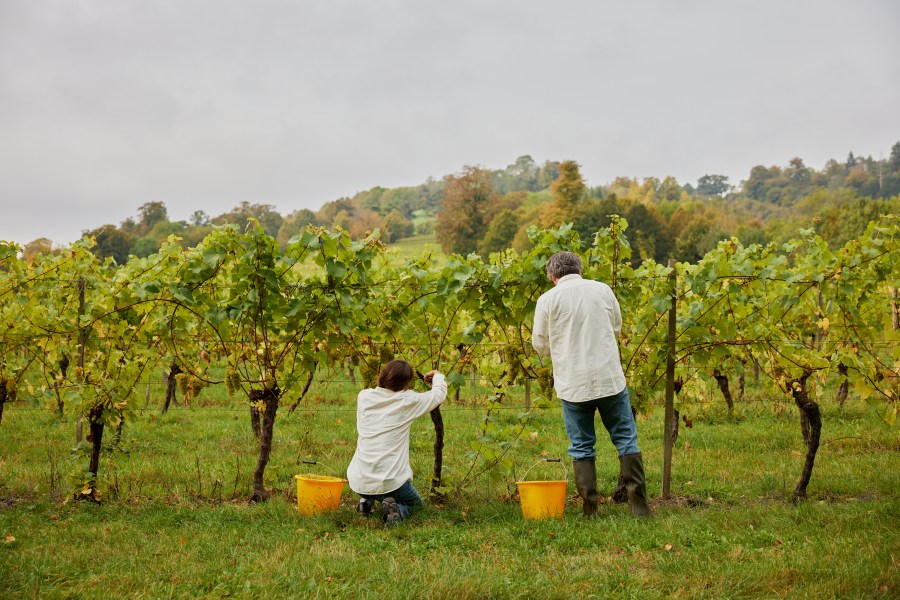For most new growers, the first harvest will come in the third year after planting, by which time vines should have established sufficiently to support a reasonable crop.
It is important to remember though, that three-year-old vines are still quite small and lack the root or canopy structure of more established sites, so yields will inevitably be lower than “industry averages”.
Quality expectations need to be managed too, as there can sometimes be a temptation to leave bunches hanging on the vine in an attempt to hold on for the higher potential alcohol levels needed for still wines.
Vines typically require around 4-6 weeks after veraison to ripen and build sugar and potential alcohol content, although this is very dependent on conditions at the time.
Leaving ripe bunches hanging too long risks diminishing the life expectancy of young vines, by eating into the carbohydrate reserves that would otherwise be laid down for the winter dormancy period, ready to be called upon for strong early growth next spring. Indeed, where bunches have been left on a young vine beyond the point that leaves begin to change colour (and therefore stop photosynthesising), a reduction in trunk diameter can sometimes be observed.
In exceptional years, such as 2022, the weather may allow growers to achieve potential alcohol levels of 13-14%, but generally in the UK, unless conditions are very favourable, the aim should be to “pick for sparkling” in the first harvest, targeting lower potential alcohol levels of 10-11%.
The potential to produce a still wine out of a young vine is low, and the risk you take in leaving bunches hanging usually outweighs any potential gains, so take time to assess what your vines can and cannot do ahead of harvest.
In situations where there is uneven bunch maturity, such as later-developing secondary bunches, it is unlikely everything will ripen to the same level in time, so in those cases consider pruning out any under-ripe material to avoid it diluting the overall sugar concentration and increasing acidity. The best time to do this is mid-way through veraison, when it is easy to identify any bunches that have not started changing colour yet.
Feeding for next year
Once crops are picked, the post-harvest period is a key time when vines absorb nutrients and build carbohydrate reserves for winter and next spring, so there can be benefits from applying some foliar nutrients and trace elements, if there is the opportunity before leaf fall.
There are four main nutrients to consider:
- Potassium – plays a central role in movement of water, nutrients and carbohydrates in all plant tissue, so levels will need topping-up after harvest
- Phosphorus – helps improve pre-dormancy root extension growth
- Boron – an essential nutrient in flower formation for next season
- Magnesium – needed for chlorophyll production. Many rootstocks (notably SO4) struggle to readily absorb magnesium from soil, so deficiencies can often occur
- Copper – less for nutrition, but more to help manage Downy mildew risk from inoculum overwintering on leaf material.
On a practical level, all of these main nutrient products have good tank mix compatibility if used individually, however pre-formulated mixes are also available.
It is best to avoid applying nitrates post-harvest, or trying to prolong the ripening period in young vines, but in more mature vineyards, there could be merit in applying products such as Maxicrop or Megafol to help keep leaves green and functioning.
Once any post-harvest applications have been made, there may also be an opportunity for subsoiling to remove any compaction that has occurred this season, and potentially sow a deep-rooting covercrop to protect the soil over winter and improve the ability to travel next spring.
Other first harvest logistical considerations
- Build a good team of pickers – recognise local volunteers may expect wine and lunch
- Ensure all necessary equipment is in place – snips for pickers, baskets, buckets, crates, etc
- Check how the winery wants to receive grapes – e.g. 25kg baskets or 250kg Dolav boxes?
- Identify where pallets need to be, check turning circles, etc
- Consider what percentage of botrytis to allow – depends on winemaker requirements and ability of pickers to remove infected material from bunches quickly. Haulage distance to winery may also need to be considered as grapes in transit for longer periods (e.g. unrefrigerated overnight freight) may be more at risk of quality issues.
For more like this, sign up for the FREE Vineyard newsletter here and receive all the latest viticulture news, reviews and insight




